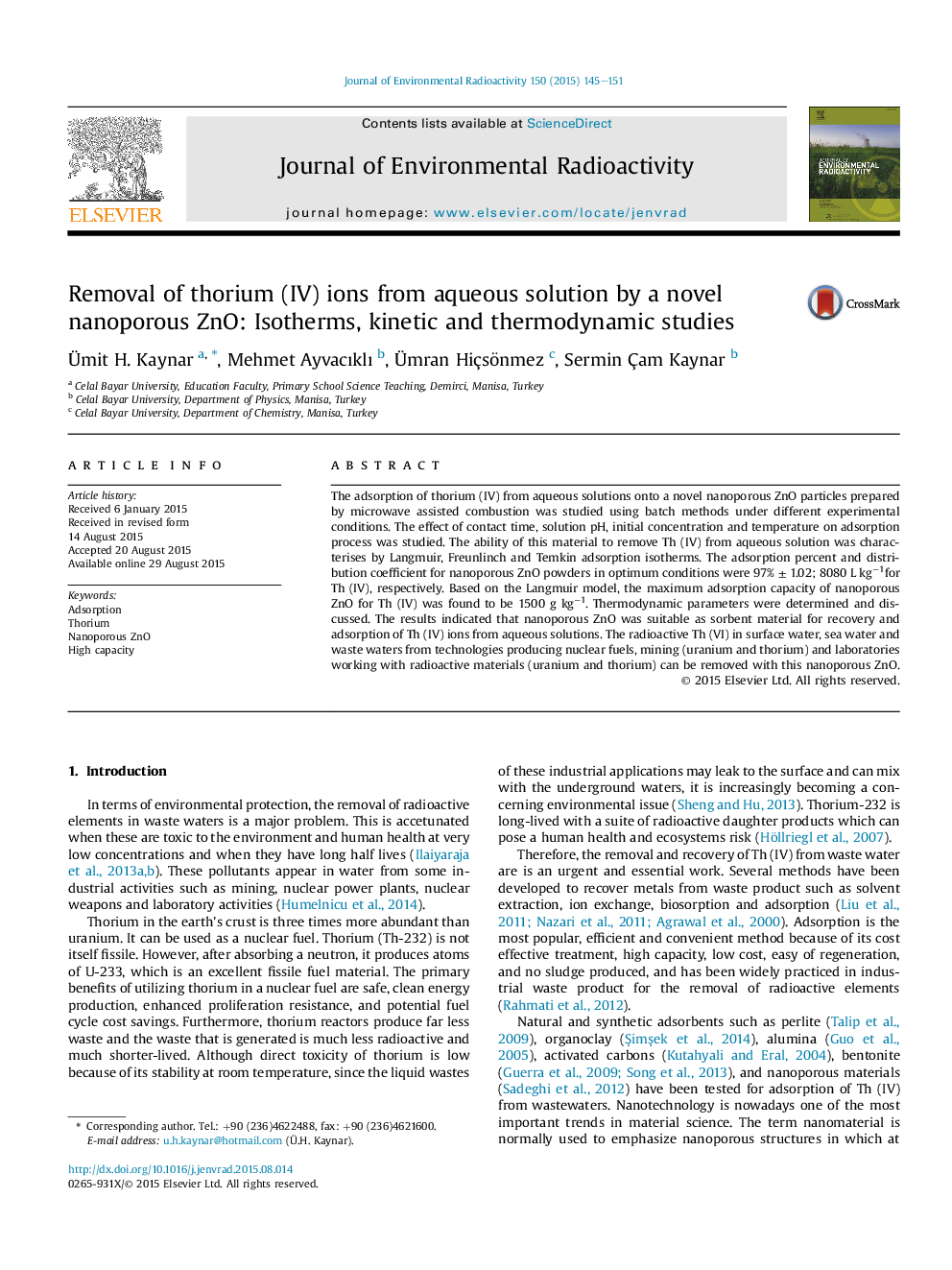| Article ID | Journal | Published Year | Pages | File Type |
|---|---|---|---|---|
| 1737797 | Journal of Environmental Radioactivity | 2015 | 7 Pages |
•Nanoporous ZnO powders used as adsorbent have been synthesized by Microwave-assisted.•Adsorption percent and distribution coefficient of 97% ± 1.0; 8080 mL g−1 for Th (IV) respectively.•The experimental data were analyzed using isotherm, kinetic and thermodynamic models.•Nanoporous ZnO powders are used as an efficient adsorbent for Th (IV) removal from aqueous solutions.
The adsorption of thorium (IV) from aqueous solutions onto a novel nanoporous ZnO particles prepared by microwave assisted combustion was studied using batch methods under different experimental conditions. The effect of contact time, solution pH, initial concentration and temperature on adsorption process was studied. The ability of this material to remove Th (IV) from aqueous solution was characterises by Langmuir, Freunlinch and Temkin adsorption isotherms. The adsorption percent and distribution coefficient for nanoporous ZnO powders in optimum conditions were 97% ± 1.02; 8080 L kg−1for Th (IV), respectively. Based on the Langmuir model, the maximum adsorption capacity of nanoporous ZnO for Th (IV) was found to be 1500 g kg−1. Thermodynamic parameters were determined and discussed. The results indicated that nanoporous ZnO was suitable as sorbent material for recovery and adsorption of Th (IV) ions from aqueous solutions. The radioactive Th (VI) in surface water, sea water and waste waters from technologies producing nuclear fuels, mining (uranium and thorium) and laboratories working with radioactive materials (uranium and thorium) can be removed with this nanoporous ZnO.
Graphical abstractFigure optionsDownload full-size imageDownload as PowerPoint slide
